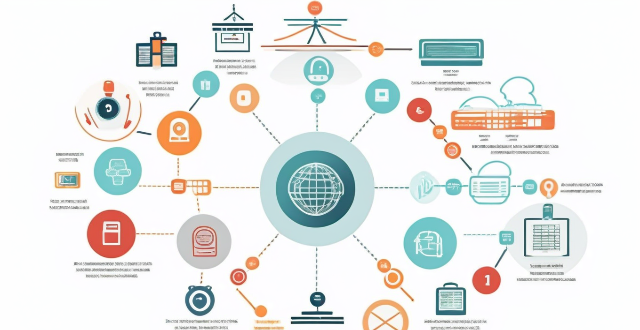Firewalls play a crucial role in ensuring communication security by acting as a barrier between trusted and untrusted networks. They contribute to communication security through packet filtering, stateful inspection, application-level gateways, content filtering, network address translation (NAT), VPN support, and integration with Intrusion Prevention Systems (IPS). These features help in preventing unauthorized access, protecting against malicious traffic, scanning for viruses, filtering specific types of data, hiding internal network structures, ensuring secure remote access, and detecting potential attacks or policy violations in real-time. Overall, firewalls provide multiple layers of protection, effectively managing and controlling network traffic to secure communications and protect against various types of cyber threats.

How Firewalls Contribute to Communication Security
Firewalls play a crucial role in ensuring communication security by acting as a barrier between a trusted network and an untrusted network, such as the internet. They contribute to communication security in several ways:
1. Packet Filtering
Firewalls examine each packet of data that passes through them and decide whether to allow or block it based on a set of rules. These rules can be configured to allow or deny traffic based on various criteria, such as source IP address, destination IP address, protocol type, and port number. This helps in preventing unauthorized access to the network and protecting against malicious traffic.
- **Example**: A firewall can be configured to allow only HTTPS traffic (port 443) from specific IP addresses while blocking all other types of traffic.
2. Stateful Inspection
Stateful inspection firewalls maintain a state table for each connection traversing the firewall. They analyze not just individual packets but also the entire session. This allows them to make more informed decisions about which packets should be allowed or blocked, thereby providing better security than simple packet filtering.
- **Example**: If a user initiates an outbound connection to a web server, the firewall will create an entry in its state table for that connection. It will then allow return traffic from the web server back to the user's device, ensuring that only legitimate responses are received.
3. Application-Level Gateways
Application-level gateways (ALGs) operate at the application layer of the OSI model and understand the protocols used by applications. They can provide additional security measures, such as scanning for viruses or filtering specific types of data within application-layer protocols like HTTP, FTP, or email.
- **Example**: An ALG can scan incoming email attachments for malware before allowing them into the network, providing an extra layer of protection against email-borne threats.
4. Content Filtering
Some firewalls offer content filtering capabilities that enable them to inspect the contents of packets for specific patterns or signatures associated with known threats. This can include identifying and blocking SQL injection attacks, cross-site scripting (XSS) attacks, and other web application vulnerabilities.
- **Example**: A content filtering firewall can be configured to block any HTTP requests containing SQL code, helping to prevent SQL injection attacks.
5. Network Address Translation (NAT)
Firewalls often include NAT functionality, which translates private IP addresses used within a network to public IP addresses when communicating with external networks like the internet. This helps in hiding the internal network structure from outsiders, making it harder for attackers to target specific devices within the network.
- **Example**: A firewall using NAT might translate an internal IP address like `192.168.1.10` to a public IP address like `52.3.23.5` when sending data to the internet, concealing the true nature of the internal network.
6. VPN Support
Many firewalls support Virtual Private Networks (VPNs), allowing secure remote access to a network over an encrypted tunnel. This ensures that data transmitted between the VPN client and the network is protected from eavesdropping and tampering.
- **Example**: A firewall can be configured to accept VPN connections from authorized users, ensuring that their communications with the network are encrypted and secure even over untrusted networks like public Wi-Fi hotspots.
7. Intrusion Prevention Systems (IPS)
Some advanced firewalls integrate Intrusion Prevention Systems (IPS) that actively monitor network traffic for signs of potential attacks or policy violations. IPS can detect and respond to threats in real-time, further enhancing communication security.
- **Example**: An IPS integrated within a firewall might detect a pattern of traffic consistent with a DDoS attack and automatically take steps to mitigate the threat, such as blocking traffic from the source IP addresses.
In summary, firewalls contribute significantly to communication security by providing multiple layers of protection, from basic packet filtering to advanced features like content filtering and intrusion prevention. By effectively managing and controlling network traffic, firewalls help secure communications and protect against various types of cyber threats.